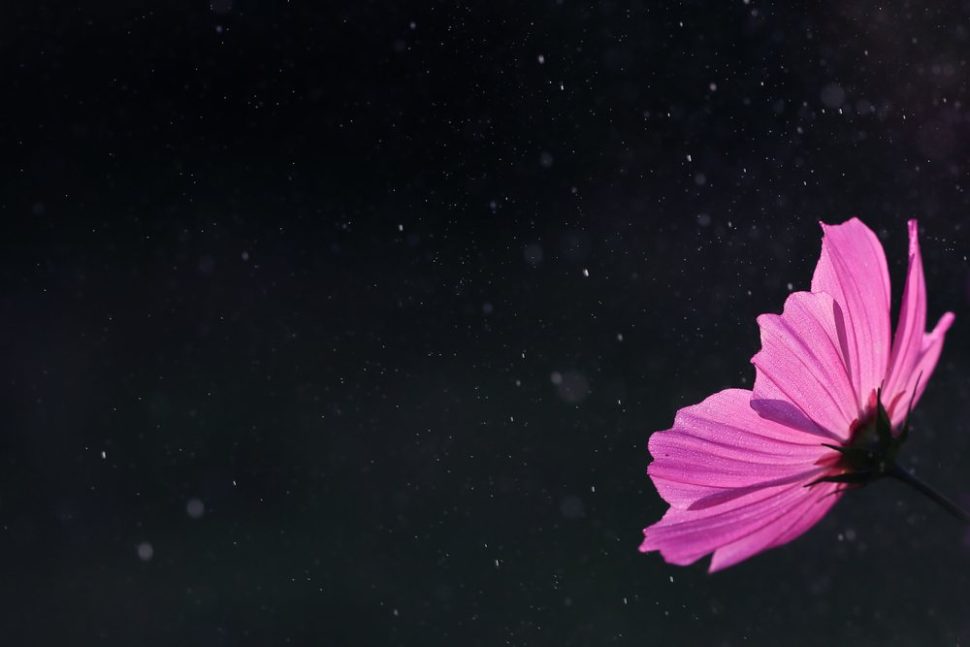Two astrobiologists found that seeds can withstand doses of UV and cosmic radiation, to some degree, which shed light on the challenge of growing food in space–something we’ll have to do in order to colonize other planets.
To feed astronauts aboard ISS, food sent must meet some logistical criteria: it must be compact because space is very limited, it must be light because sending products to orbit is extremely expensive, and it must have a long shelf life as missions often last months or even years.
But, if humans want to one day colonize Mars or the Moon, food self-sufficiency away from Earth will have to be achieved. The most convenient solution would be to grow food in space.
The first difficulty that future space farmers will have is accessing radiation-resistant plant seeds.
Plant seeds were the first space travelers.Click To TweetThe First Earth Organisms to go to Space Were Plant Seeds
For many decades, since the very beginning of the space program, scientists have been accumulating knowledge on radiation’s effect on living organisms. Cultivating plants in space will be crucial to future long space trips and permanent off-Earth colonies alike.
In 1946, then-fledgling proto-NASA engineers sent corn seeds (and fruit flies) into space aboard a V-2 rocket to study the effects of cosmic radiation on living organisms. Though this first payload was lost, many other experiments continued during the following years where all kinds of seeds were sent to orbit.
“SEEDS in Space” (Space Exposed Experiment Developed for Students) is a long-standing partnership between NASA and a company called Park Seed.
In 1983, Park Seed sent 25 pounds of seeds from 40 different varieties aboard the Challenger shuttle.
The next year, as part of NASA’s LDEF project (Long Duration Exposure Facility), the company sent 25 million tomato seeds that remained in orbit for 5 years.
In 2006, a payload of approximately 1 million Cinnamon Basil seeds was sent to the ISS.
Seeds, Extreme Survivors
Upon examination of the seeds after they returned later to Earth (thanks to SEEDS in Space experiments), no obvious signs of damage were found.
Other experiments also have shown that plant seeds are able to mostly-survive exposure to the harsh conditions in space, especially UV and cosmic radiation.
EXPOSE-E is NASA’s space module dedicated to astrobiology experiments. Between 2007 and 2009, as part of EXPOSE-E’s missions, around 2000 seeds from two plants (tobacco plant and Arabidopsis thaliana) were kept 558 to 682 days in the space vacuum outside the ISS.
These seeds received high doses of aggressive radiation (UV, up to 1030 MJ / m², and gamma rays 296 mGy), in addition to extreme temperatures.
Once brought back to Earth, 60% of shielded seeds were able to germinate. However, only 3% of the seeds fully exposed to space radiation were able to germinate.
This experiment was conducted by two astrobiologists, David Tepfer and Sydney Leach. And now, almost a decade later, the two researchers investigated how these seeds could germinate after a long exposure to space vacuum.
Genetic Redundancy and Flavonoids
The apparent survivability of seeds in space can be explained by the genetic redundancy of genes between the different sets of chromosomes. Tobacco, for example, compared to human chromosomes pairs, has 4 copies of each chromosome. If a copy gets damaged, another one takes over.
Tepfer and Leach believe also that the flavonoids (natural compounds in plant cells) contained in the seeds make a difference by shielding DNA from UV light.
To carry on with their research, the team recreated space conditions in the lab where they exposed the seeds of tobacco and Arabidopsis to UV radiation.
After exposure to 87 megajoules per square meter (MJ / m²) of UV radiation, most of the tobacco and Arabidopsis seeds couldn’t germinate, unlike all of the morning glory seeds that survived, even at a huge dose of 2420 MJ / m².
“We thus confirm that a naked plant seed could survive UV exposures during direct transfer from Mars to Earth,” concluded the researchers in the paper published in Astrobiology. “And suggest that seeds with a more protective seed coat (e.g., morning glory) should survive much longer space travel.”



















Comments (0)
Most Recent